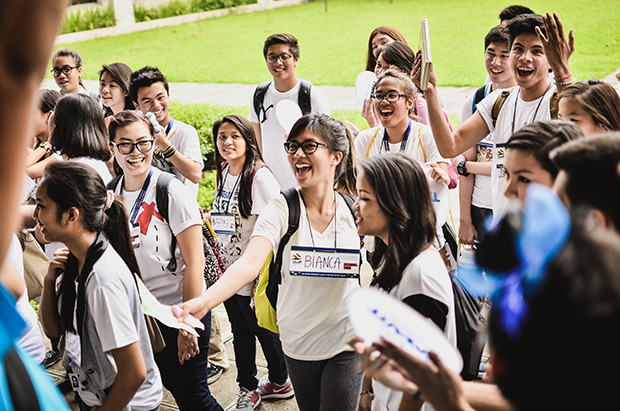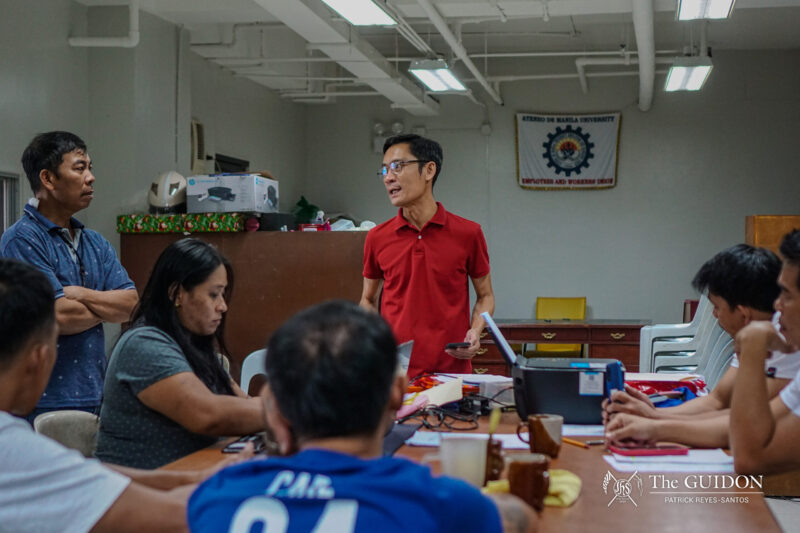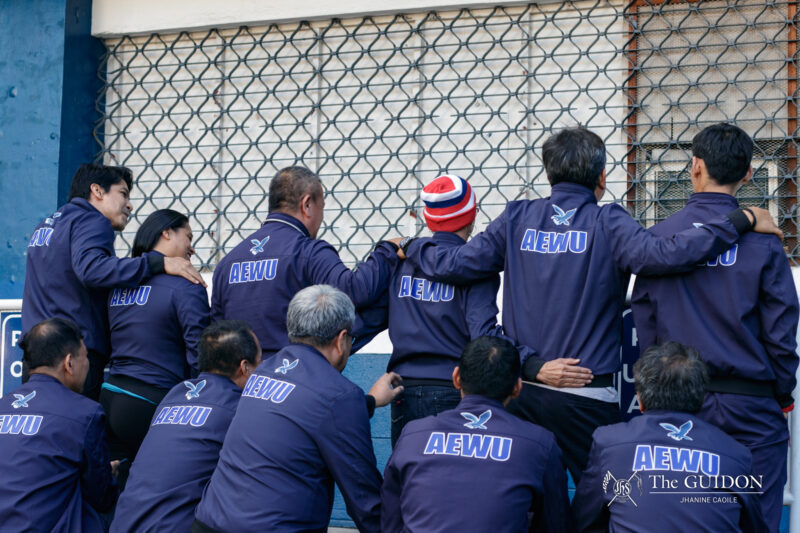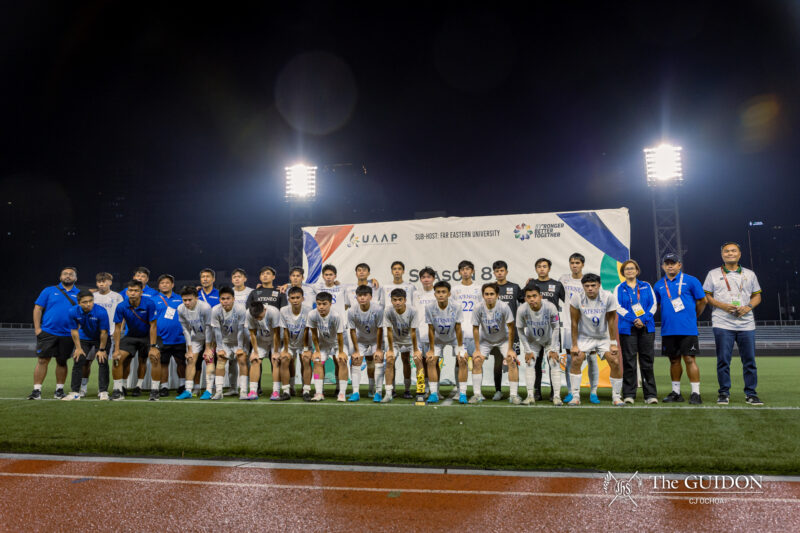OFFICE OF Student Activities (OSA) Director Christopher Castillo elaborated on the procedures behind the Student Activities Fund (SAF) in an interview with The GUIDON last September 19.
The SAF is a sum of money allotted for student activities generated through the 485-peso Student Activities Fee that each enrollee pays per semester.
Castillo said that the SAF is used in six different areas: The Sanggunian budget, the Council of Organizations of the Ateneo Central Board (COA CB) budget, the COA-accredited organizations’ budgets, subsidies, leadership and formation programs and other projects in the Ateneo.
Sanggunian Finance Officer Tin Andujare said that the goal of all the units sourcing money from the SAF is to ensure that these funds go to activities that benefit the students.
Castillo explained that there is no fixed amount of money allocated to the six areas.
“They fall into a certain range. There’s an alignment. If there is space [in one], maybe we can be more generous [there],” he said in a mix of English and Filipino.
Where the money goes
Castillo further expounded on the expenses included in the SAF.
According to him, the budget for the Sanggunian covers the activities of the different units of the student government.
These include the following: The School of Humanities, the School of Social Sciences, the School of Science and Engineering, the John Gokongwei School of Management, the Department of Student Welfare and Services, the Ateneo Commission on Elections, the Ateneo Student Judicial Court, and the Department of Student Leadership and Development.
Castillo clarified that while the Ateneo Resident Student Association is part of the Sanggunian, it is not covered by the Sanggunian SAF and has a separate budget allotment of its own.
Meanwhile, Castillo said that the COA CB SAF allotment covers the activities conducted by the COA CB members from the different clusters.
The COA clusters are the following: The Business Cluster, the Faith Formation Cluster, the Health and Environment Cluster, the Intercultural Relations Cluster, the Science and Technology Cluster, the Analysis and Discourse Cluster, the Sector-Based Cluster, the Performing Arts Cluster, and the Media and the Creative Arts Cluster.
Castillo added that the SAF allocations for the Sanggunian and the COA CB cover their activities for the entire school year.
Meanwhile, each COA-accredited student organization is allotted a fixed amount of 15,000 pesos per semester under the SAF. Additional funds that are given to the organizations fall under Boost.
Boost is a program that allows the three subsidy systems of the COA, Sanggunian and OSA to work independently.
COA’s Accelerate grants subsidies to the flagship projects of its organizations, while the Sanggunian Subsidy System is intended for thesis work, group projects and sending students to competitions. The OSA subsidy system helps cover what the other two cannot. Castillo said it acts as the “safety net” of Boost.
According to Castillo, OSA tries to keep the allocation of the three subsidy systems at 500,000 pesos each to ensure that all offices receive an equal amount under the programs. However, he emphasized that there is no actual cap for the allocation.
Castillo added that the funds for the organizations’ activities executed during the summer semester are included in the first semester budget, while the funds for those carried out during the semestral break are counted in the second semester budget.
Castillo also elaborated on the SAF budget for the leadership and formation programs that OSA and other formation offices execute for the student leaders of both accredited and unaccredited student organizations.
This portion of the SAF covers organization-specific training programs, the Ateneo Sibol leadership program and other projects under the Loyola Schools Integrated Non-Academic Formation program.
Castillo said that special projects, such as the Ateneo Freshman Orientation Seminar, Ignatian Festival and sudden mobilizations, are also taken from the SAF budget. However, these projects do not depend solely on the SAF.
“[These projects] also generate their own funds,” Castillo explained.
Seeking transparency
Last year, student political party Christian Union for Socialist and Democratic Advancement (Crusada) sought the disclosure of the SAF.
Crusada Party Premier Rico La Viña explained that their goal was to redistribute a portion of the SAF to the COA organizations.
“We believed, and still believe, that more of the SAF money should be given to the organizations rather than to Sanggu,” he said.
However, the SAF needed to be disclosed before it could be redistributed. Crusada pushed for the Freedom of Information (FOI) bill, which would oblige the Sanggunian to find out how much is in the SAF.
“SAF was disclosed after we did that, so I would say that there has been progress [with regard to the passage of the bill into law],” La Viña said.
Andujare said that the current Sanggunian administration is “definitely pro-FOI” and is keeping tabs on its legislation progress.
She added that the Sanggunian Department of External Affairs has been sponsoring talks to spread awareness on the issue.
Castillo said, “We have no problems with disclosure… it’s just that, in the previous years, it was never really needed per se.”
He added that the SAF amount is not “entirely mysterious.” The Student Activity Fee found on the tuition receipt can be multiplied to the number of students currently enrolled to arrive at how much is in the fund.
Full disclosure
Castillo noted that the SAF is being scrutinized by the students precisely because they are the primary recipients of the fund. He said that “it is a good thing” for the students to be asking for transparency.
“As I’ve said, once you see it (the SAF), you might be the ones surprised at how much we spend on what you guys do,” he said.
La Viña asserted that the students have the right to know and have a say in how the SAF is spent.
“Remember that the biggest stakeholders of the SAF issue are the students,” he said.
Castillo is currently in the process of arranging a forum on the SAF. He said that he is being careful with its presentation because accuracy is required in dealing with the figures.
“The data is just so massive. You can’t just say, ‘Okay, this is it,’ only to find it wrong,” he said.
According to Sanggunian Finance Officer Andujare, the SAF disclosure is a currently a “work in progress.”







